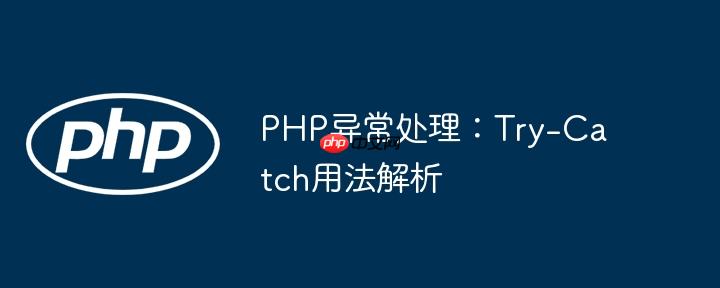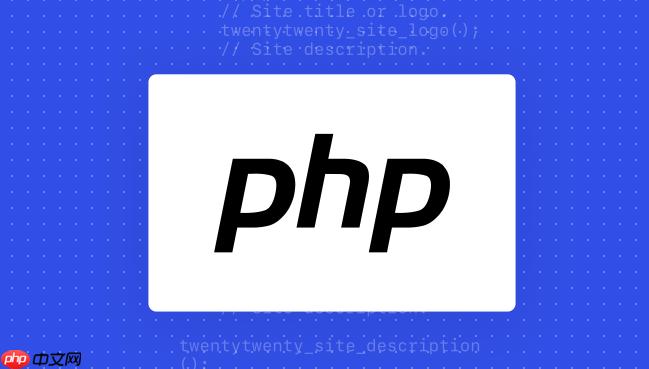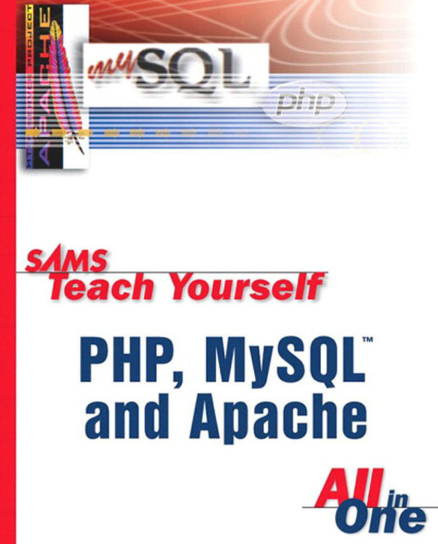
PHP异常处理的核心在于优雅地处理代码中可能出现的错误,防止程序崩溃,并提供更友好的用户体验。简单来说,try-catch 块就是用来捕获和处理这些错误的。

解决方案

try-catch 块是PHP异常处理机制的基础。它的工作方式如下:

try 块: 将可能抛出异常的代码放入 try 块中。PHP会尝试执行这些代码。
立即学习“PHP免费学习笔记(深入)”;
catch 块: 如果 try 块中的代码抛出了异常,程序会立即跳转到与该异常类型匹配的 catch 块中。你可以有多个 catch 块,分别处理不同类型的异常。
异常对象: 抛出的异常会被封装成一个对象,catch 块可以访问这个对象,获取异常信息,比如错误消息、错误代码等。
<?php
function divide($dividend, $divisor) {
if ($divisor == 0) {
throw new Exception("Division by zero is not allowed.");
}
return $dividend / $divisor;
}
try {
$result = divide(10, 0);
echo "Result: " . $result; // 这行代码不会被执行,因为上面抛出了异常
} catch (Exception $e) {
echo "An error occurred: " . $e->getMessage();
} finally {
echo " - This will always execute.";
}
?>在这个例子中,divide 函数在除数为零时抛出一个 Exception 异常。try 块尝试调用这个函数,但由于异常被抛出,程序跳转到 catch 块,并打印错误消息。finally 块无论是否有异常抛出都会执行,适合用于资源清理等操作。
PHP异常处理的常见类型有哪些?如何选择合适的异常类型?
PHP内置了许多异常类,例如 Exception(所有异常的基类)、ErrorException(将错误转换为异常)、InvalidArgumentException、RuntimeException 等。选择合适的异常类型至关重要,因为它能帮助你更精确地定位和处理错误。

本书将PHP开发与MySQL应用相结合,分别对PHP和MySQL做了深入浅出的分析,不仅介绍PHP和MySQL的一般概念,而且对PHP和MySQL的Web应用做了较全面的阐述,并包括几个经典且实用的例子。 本书是第4版,经过了全面的更新、重写和扩展,包括PHP5.3最新改进的特性(例如,更好的错误和异常处理),MySQL的存储过程和存储引擎,Ajax技术与Web2.0以及Web应用需要注意的安全
 406
406

例如,如果函数接收到一个无效的参数,应该抛出 InvalidArgumentException。如果发生了运行时错误(比如文件不存在),应该抛出 RuntimeException。
你也可以自定义异常类,继承自 Exception 或其他内置异常类。这样做可以更好地组织你的代码,并提供更具体的错误信息。
<?php
class MyCustomException extends Exception {
public function __construct($message = "", $code = 0, Throwable $previous = null) {
parent::__construct($message, $code, $previous);
}
public function customFunction() {
return "This is a custom exception!";
}
}
try {
throw new MyCustomException("Something went wrong!");
} catch (MyCustomException $e) {
echo $e->getMessage() . "<br>";
echo $e->customFunction();
}
?>如何使用多个 catch 块处理不同类型的异常?
有时,try 块中的代码可能会抛出多种类型的异常。为了更好地处理这些异常,可以使用多个 catch 块,每个 catch 块处理一种特定类型的异常。
<?php
try {
// Some code that might throw different types of exceptions
if (rand(0, 1)) {
throw new InvalidArgumentException("Invalid argument!");
} else {
throw new RuntimeException("Runtime error!");
}
} catch (InvalidArgumentException $e) {
echo "Caught InvalidArgumentException: " . $e->getMessage();
} catch (RuntimeException $e) {
echo "Caught RuntimeException: " . $e->getMessage();
} catch (Exception $e) {
echo "Caught a generic exception: " . $e->getMessage();
}
?>注意 catch 块的顺序很重要。通常,应该先捕获更具体的异常类型,然后再捕获更通用的异常类型(例如 Exception)。如果先捕获 Exception,那么所有其他异常都会被这个 catch 块捕获,后面的 catch 块将永远不会被执行。
finally 块的作用是什么?何时应该使用它?
finally 块是PHP 5.5引入的,它提供了一种机制,确保无论 try 块中是否抛出异常,某些代码总是会被执行。这在资源清理方面非常有用,例如关闭文件、释放数据库连接等。
<?php
$file = null;
try {
$file = fopen("myfile.txt", "r");
if (!$file) {
throw new Exception("Could not open file!");
}
// Do something with the file
echo fread($file, 1024);
} catch (Exception $e) {
echo "An error occurred: " . $e->getMessage();
} finally {
if ($file) {
fclose($file);
echo " - File closed.";
}
}
?>在这个例子中,无论是否成功打开并读取文件,finally 块都会确保文件被关闭。即使在 try 块中抛出了异常,finally 块仍然会被执行,从而避免资源泄漏。
以上就是PHP异常处理:Try-Catch用法解析的详细内容,更多请关注php中文网其它相关文章!

PHP怎么学习?PHP怎么入门?PHP在哪学?PHP怎么学才快?不用担心,这里为大家提供了PHP速学教程(入门到精通),有需要的小伙伴保存下载就能学习啦!

Copyright 2014-2025 https://www.php.cn/ All Rights Reserved | php.cn | 湘ICP备2023035733号